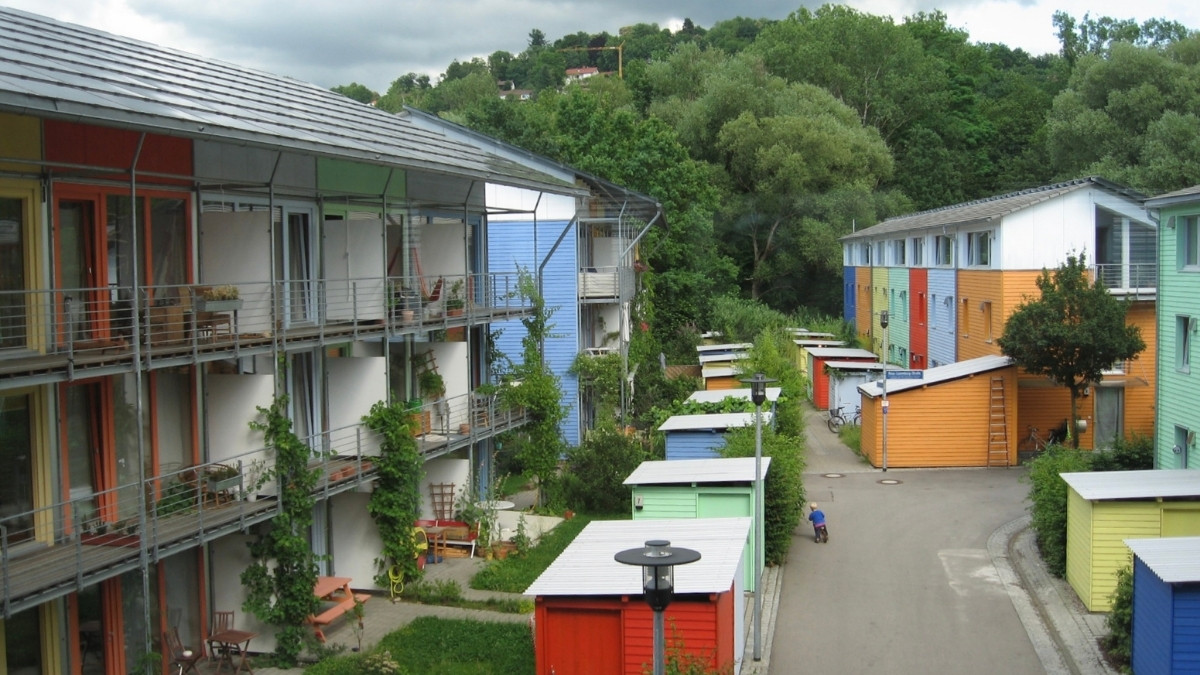Key Points
- Freiburg's Vauban district is a world-famous model for "car-lite" urban living.
- Residents pay a high fee (over $20,000) for a parking spot in garages on the town's edge.
- All homes are "Passive" or "Plus-Energy," using solar to produce more power than they consume.
It's hard to picture a life without pollution and traffic jams in big cities all over the world, including India. What if, though, a city were made for people instead of cars?
It sounds like a dream from the future, but one lively town in Germany has been living this way for decades. This "eco-capital" has a world-famous neighbourhood where children play on the streets, the air is clean, and the primary mode of transport is a bicycle or a tram. This isn't just an experiment; it's a living, breathing blueprint for sustainable urban planning that actually works.
The 'Eco-Capital' Revealed: What is Freiburg's Vauban District?
The city in question is Freiburg, Germany, and the neighborhood in question is Vauban. This community of about 5,500 residents is world-famous among urban planners and environmentalists.
What makes Vauban, Germany, so special is its origin. It was built on the site of a former French military base in the 1990s. The new residents and planners decided to build a community from the ground up based on green principles instead of a typical development. This Freiburg sustainable planning model made it one of the most eco-friendly cities in the world and a prime example of a car-free city.

How Does a 'Car-Free' Life Actually Work in Vauban?
This is the most common question. It's not that cars are strictly "banned," but the entire system is cleverly designed to make not owning a car the easier and cheaper choice. Here’s how the Vauban, Freiburg model works:
-
Parking on the Edge: If residents must own a car, they cannot park it near their homes. They must buy a spot in a large, community parking garage on the edge of the district. This spot can reportedly cost over $20,000 (around ₹16.7 Lakhs).
-
"Car-Free" by Choice: Because of this high cost and inconvenience, over 70% of Freiburg Vauban residents have voluntarily chosen to live without a personal car.
-
Excellent Public Transport: A tram line runs directly through Vauban, connecting residents to Freiburg's city centre in just a few minutes.
-
King of the Road, The Bicycle: The entire area is a paradise for cyclists and pedestrians. Wide, safe paths make it the fastest and most popular way to get around.
-1762593466178.jpg)
Find Out - Which is the Greenest City in the World and Why?
What Makes This German Green City So Smart?
Freiburg's status as a German green city goes far beyond its transport. The green philosophy is built into the bricks and mortar of the neighbourhood.
Freiburg is globally known as a "Solar City." In Vauban, this is unavoidable. Nearly all buildings are "Passive Houses" (requiring almost no energy for heating) or "Plus-Energy" houses.
These homes, which have high-tech solar panels, make more energy than they use. People who live there can often sell the extra electricity back to the grid, which means they can make money from their own homes.
Every house has a green roof that keeps the building cool and collects rainwater. There are community gardens and a natural water drainage system in the area, so there are no concrete sewers.
Vauban isn't a futuristic fantasy; it's a proven, 25-year-old reality. It stands as a powerful example that smart urban design can create a future that is cleaner, quieter, and more focused on community
Comments
All Comments (0)
Join the conversation